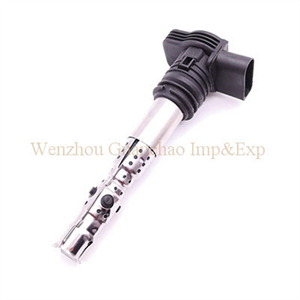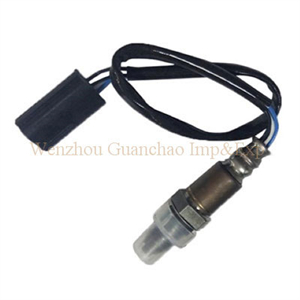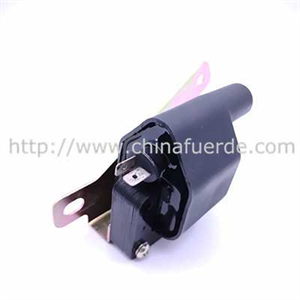Electronically controlled ignition system
Datetime: 25/05/2018 04:00 Visit: 1330
In modern high-speed gasoline engines, microprocessor-controlled ignition systems, also known as digital electronically-controlled ignition systems, have been used. This ignition system consists of three parts: a microcomputer (computer), various sensors, and an ignition actuator.
In fact, in modern engines, the two subsystems, gasoline injection and ignition, are controlled by the same ECU, using a combination of sensors. The sensor is basically the same as the sensor in the electronically controlled gasoline injection system. For example, it has a crankshaft position sensor, a camshaft position sensor, a throttle position sensor, an intake manifold pressure sensor, and a knock sensor. Among them, the deflagration sensor is a very important sensor for electronically controlled ignition (especially an engine that uses an exhaust gas turbocharger). It can monitor the degree of deflagration and deflagration of the engine, as a feedback signal to make the ECU command to achieve spark advance, so that The engine will not deflagrate but also achieve high combustion efficiency.
The digital electronically controlled ignition system (ESA) is divided into two types, the electrical distributor type and the non-distributive type (DLI) according to the structure. The distributor-type electronically controlled ignition system uses only one ignition coil to generate high-voltage electricity, and then the distributors sequentially ignite the spark plugs in each cylinder in accordance with the ignition sequence. Because the on-off work of the primary coil of the ignition coil is borne by the electronic ignition circuit, the distributor has canceled the breaker device and only plays the role of high voltage distribution.
Twin-cylinder ignition
Refers to the combination of two cylinders with one ignition coil, so this ignition method can only be used on an engine with an even number of cylinders. If on a four-cylinder machine, when two cylinder pistons approach the top dead center at the same time (one is the compression and the other is the exhaust), two spark plugs share the same ignition coil and fire at the same time. At this time, one is effective and the other is invalid. In the ignition, the former is in a mixture of high pressure and low temperature, and the latter is in the exhaust gas of low pressure and high temperature, so the resistance between the two electrodes of the spark plug is completely different, and the energy generated is also not the same, resulting in much greater energy for effective ignition. About 80% of the total energy.
Individual ignition
Each cylinder is assigned an ignition coil. The ignition coil is mounted directly on the top of the spark plug. This also eliminates the high voltage line. This kind of ignition method achieves accurate ignition through the camshaft sensor or by monitoring the cylinder compression. It is suitable for any number of cylinders of the engine, and is particularly suitable for the engine with four valves per cylinder. Because the spark plug ignition coil assembly can be installed in the middle of a dual overhead camshaft (DOHC), full use is made of clearance space. Due to the cancellation of distributors and high-voltage lines, energy conduction losses and leakage losses are minimal, there is no mechanical wear, and the ignition coils and spark plugs of the cylinders are assembled together with external metal packages, which greatly reduces electromagnetic interference and can ensure the normality of the engine electronic control system. jobs.
Related Message
-
Car engine parts manufacturer tells you about the structure of automobile engine
2022-12-06 -
Difference between spark coils and ignition plugs
2022-11-28 - 2022-11-26
- 2022-11-17
- 2022-11-10




